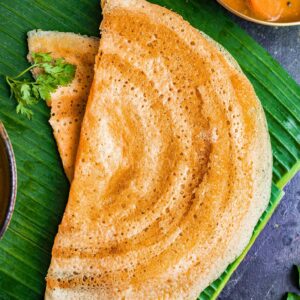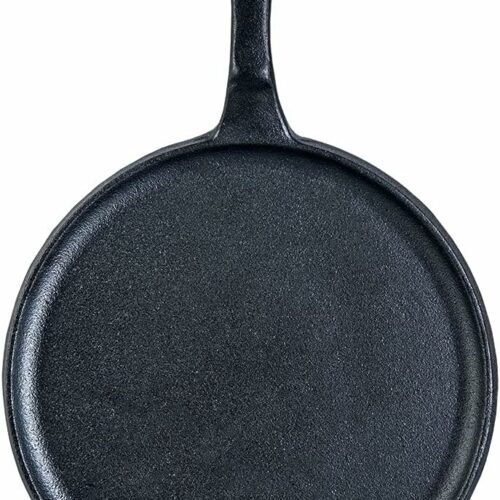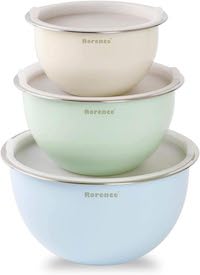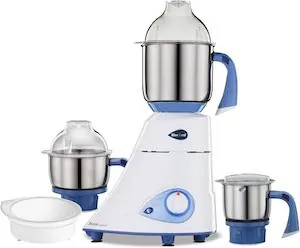
Gluten Free Dosa
Gluten free dosa is made from fermented rice and lentil batter cooked until crisp, golden brown, and tangy.
Ingredients
- 420 g sona masoori or idli rice
- 140 g split urad dal
- ½ teaspoon fenugreek seeds optional
- 150 ml cold water to grind the rice
- 150 ml cold water to grind the split urad dal
- 1 tablespoon poha flattened/beaten rice, optional
- oil neutral, to cook the dosa
Instructions
Ferment the Dosa Batter
- In separate bowls, wash 420 g sona masoori or idli rice and 140 g split urad dal until the water runs clear.
- Soak the rice and dal. In one bowl, add the rice and ½ teaspoon fenugreek seeds with plenty of fresh water. In the other, add the split urad dal, again with plenty of fresh water. Leave to soak overnight, or around 8 hrs.
- Grind the urad dal. The next morning, drain the old water. To a large mixer grinder, add the drained urad dal along with 150 ml cold water. Grind in pulses until you achieve a smooth batter, and transfer to a very large bowl.
- Grind the rice. Drain excess water from the rice and fenugreek seeds. Add them to the same mixer grinder along with 150 ml cold water and 1 tablespoon poha. Grind to a smooth (slightly grainy is normal) paste. Transfer the paste to the same large bowl as the dal.
- Mix the batter. Using your clean hands, mix the two batters until incorporated.
- Leave the gluten free dosa batter to ferment. Cover the bowl with a plate and place it in a dark location (or cover with towels). Leave it to ferment for at least 8 hrs. You can tell the batter is fermented as it rises, becomes fluffy, and develops a sour smell. See the pictures in the post above for reference.
Cook the Dosa
- Once fermented, add sea salt to the batter and mix well. Then add water to loosen the consistency to a thick yet flowing paste. Don't make it too thin or too thick, as it will make the dosa hard to spread!*
- Over your largest stovetop ring, heat your cast iron tawa over a medium flame. Once it steams, sprinkle cold water over the tawa — it should "dance" and begin to evaporate.
- Use a large metal ladle, take a ladleful of batter, and drop it in the middle of the tawa. Quickly and carefully make circular motions with the rounded back of your ladle, working outwards, to create the dosa shape.
- Drizzle the top of the dosa with oil and leave it to cook until you can see the bottom colour change to golden brown, and the edges leave the side of the pan. Once this happens, use a metal utensil to take the dosa from the pan. No need to cook the other side!
- Repeat.
Notes
*I haven't given exact measurements for the quantity of water to add as it depends on the state of fermentation.
Nutrition
Serving: 1gCalories: 111kcalCarbohydrates: 20gProtein: 4gFat: 2gPolyunsaturated Fat: 2gSodium: 111mgFiber: 2gSugar: 1g
Tried this recipe?Please consider leaving a review!


